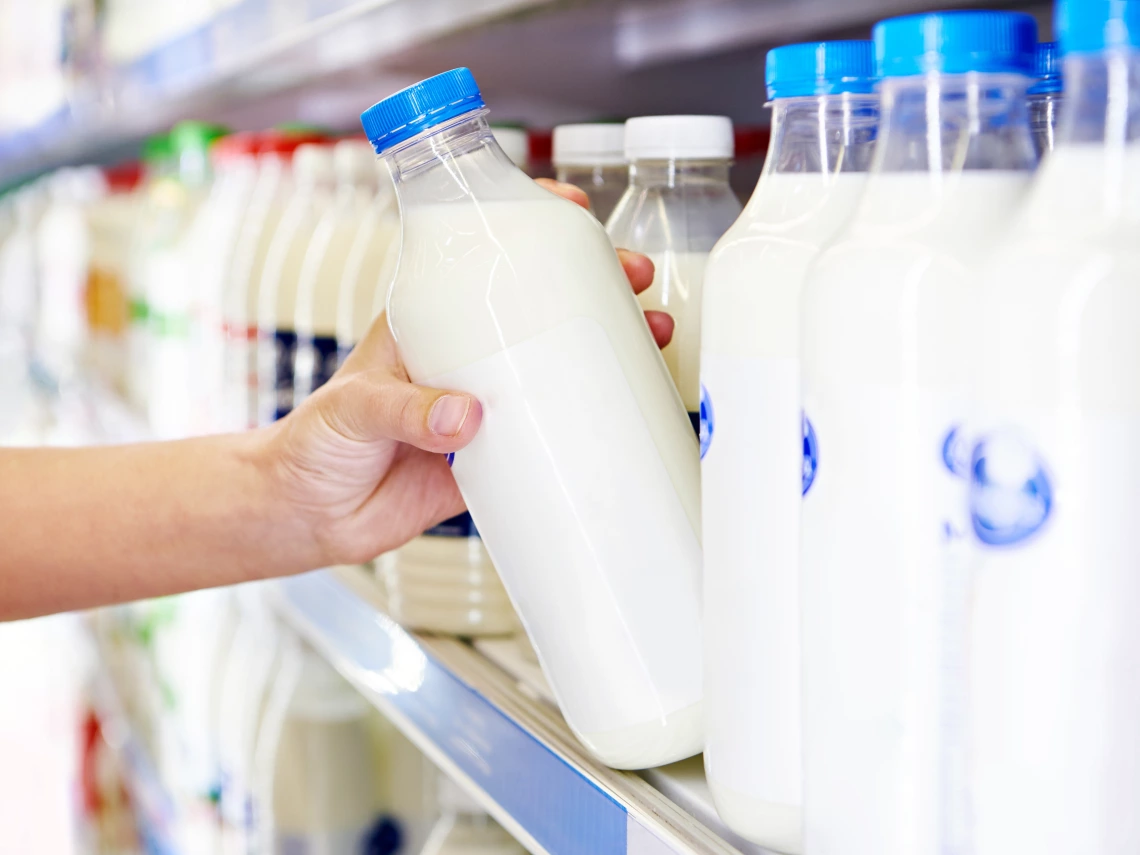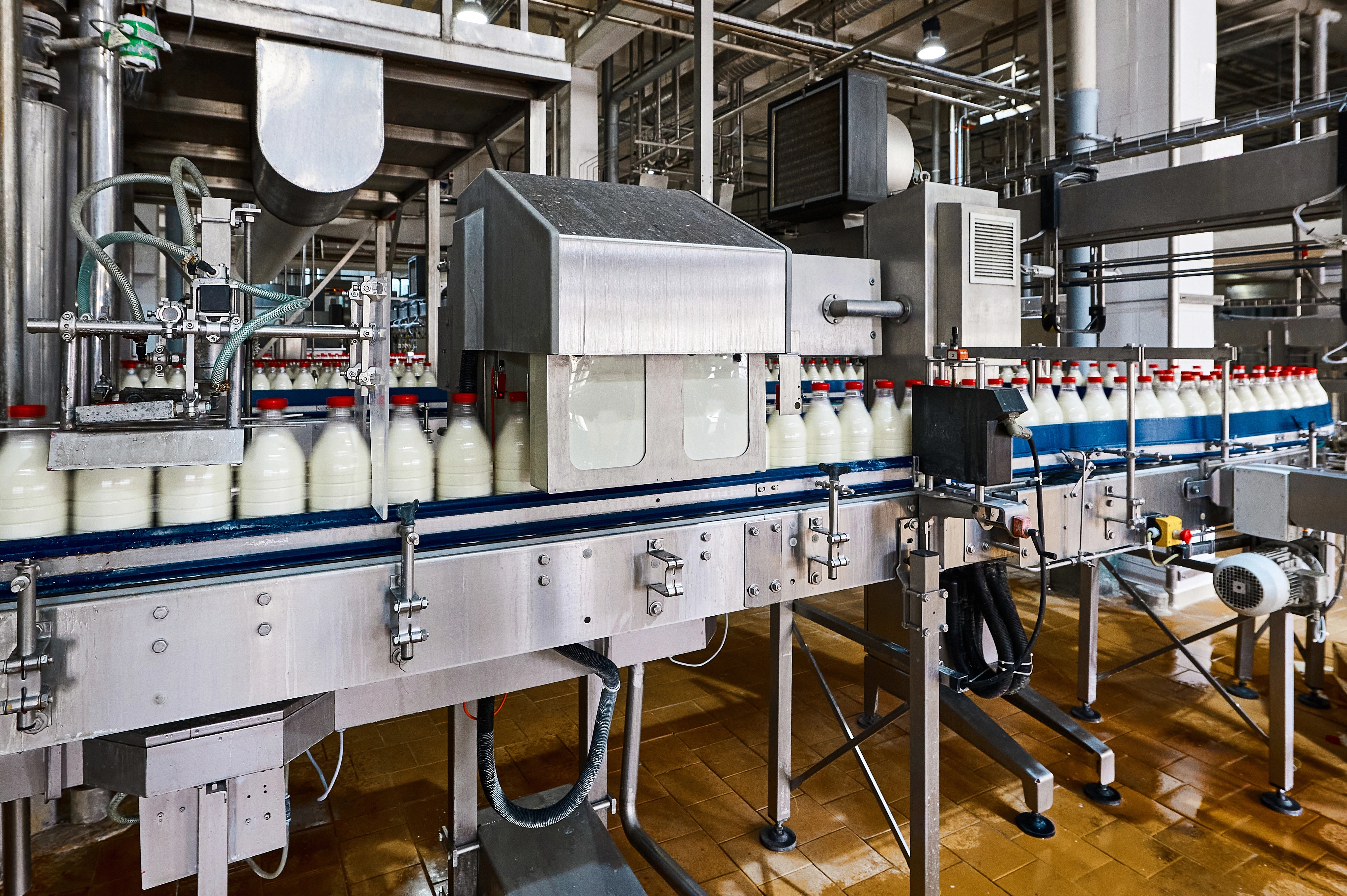The great dairy debate; or, Why we pasteurize

There’s a new (old?) player on supermarket dairy shelves, and its presence has the potential to impact consumer health. Embraced by a number of influencers, celebrities and politicians, raw milk and related products are experiencing a surge in demand. That trend is raising questions about how - and why - we process dairy products.
Raw milk proponents claim that “completely natural, fresh, and unprocessed milks” are healthier and taste better than conventional, pasteurized dairy. But most food safety experts say that pasteurization is essential for consumer safety.
So what is pasteurization – and is it really necessary? We asked Margarethe Cooper, an associate professor of practice in the School of Animal and Comparative Biomedical Sciences who specializes in food safety and toxicology, to take us through the basics.
What is pasteurization?
Pasteurization is the heating of food and beverages in order to destroy disease-causing microorganisms. The process was developed by Louis Pasteur in 1864 as a means of preventing spoilage in wine and beer during long-distance transport. Six years later, Danish scientist N. J. Fjord adapted the process for milk, and over the next half-century, the practice spread across Europe and North America as a means of ensuring the safety and extending the shelf life of commercially produced cow’s milk. By 1936, 98% of the cow’s milk supply in major American cities was pasteurized.
Today, there are two main types of milk pasteurization. The High Temperature Short Time method (also called “pasteurized”) raises the temperature to 161° F for 15 seconds before rapidly cooling it to 39° F. The Ultra High Temperature method (also called “ultra-pasteurized”) raises the temperature to 280° F for 2 seconds before cooling.
Cooper explained that pasteurizing dairy has significant benefits for human health. "The potential risk for pathogenic contaminants in dairy is just so high," she said.
"Pasteurization makes our milk supply safer. It destroys the microbes that we know can potentially cause disease, especially for vulnerable populations like children under the age of five, pregnant people, the immunocompromised and the elderly."
Pasteurization also allows milk products to be safely transported long distances and greatly extends shelf life. Cooper said that refrigerated, pasteurized milk has a shelf life of 12-21 days after being processed. Ultra-pasteurized milk can be safely stored in the fridge even longer - 30-90 days after processing.

Are there risks in pasteurizing milk?
There are no known health risks associated with pasteurization, and there is also no evidence that pasteurization causes any significant change in nutritional value.
According to Cooper, there is a chance that pasteurized milk may taste different than raw milk. “There is a potential flavor difference in ultra-pasteurized products,” she said. “The Ultra High Temperature process can lead to some changes in the proteins, so some folks do notice a flavor or texture difference.”
What are the risks of consuming unpasteurized milk?
Consuming unpasteurized milk can expose you to a number of microbes that can lead to disease. These include Listeria, E. coli, Salmonella and Mycobacterium bovis, which can cause tuberculosis in humans.
Many of these cause gastrointestinal symptoms – which can be severe – and some can cause more serious complications.
“Some of these microbes can be really dangerous,” Cooper warned. “Listeria, for example, can cause a pregnant person to have a miscarriage. And in some cases, E. coli can lead to hemolytic uremic syndrome in which the kidneys shut down, a condition that can have lifelong consequences - if the patient survives.”
It isn’t just raw milk, either. Unpasteurized cheese also carries significant risk of foodborne illness. Cooper pointed to recorded outbreaks of E. coli in raw cheddar, and she said it’s possible that H5N1 – also known as avian influenza – may be transmissible through raw milk and cheese.
Pathogenic microbes transmissible through milk | |
|---|---|
| Listeria | Can cause fever, chills, muscle aches, nausea and diarrhea. If infection spreads to the nervous system, may cause symptoms like headache, stiff neck, confusion, loss of balance or convulsions. May cause a pregnant person to miscarry. |
| E. coli O157:H7 | Can cause abdominal cramps, fatigue, nausea and severe diarrhea that in some cases may lead to hemolytic uremic syndrome (HUS), a condition in which the kidneys shut down, which can be fatal. |
| Campylobacter jejuni | Can cause diarrhea, fever and stomach cramping. Connected to irritable bowel syndrome (IBS). In rare cases, may lead to Guillain-Barré syndrome (GBS). |
| Salmonella | Can cause diarrhea (which may be bloody), fever, chills, stomach cramping, nausea, vomiting and headache. |
| Brucella | Can cause fever, sweats, loss of appetite, weakness, fatigue, joint / muscle / back pain and headache. May become chronic, even after treatment. |
| Cryptosporidium | Can cause prolonged, frequent, watery diarrhea. May also cause stomach cramps, nausea, vomiting, fever, weight loss and dehydration. In people with weakened immune systems, may affect biliary tract, pancreas or respiratory tract. |
| Mycobacterium bovis | Can cause tuberculosis in humans, with symptoms that include cough, fever, night sweats and weight loss. |
What might happen if the federal government loosens regulations around pasteurization?
Even if regulations are reduced, it’s unlikely that the majority of milk producers would move away from pasteurization, Cooper said.
“Big dairies already have processing and testing infrastructure that they’ve invested in,” she explained. “From a liability perspective, too, it makes sense that they’d continue to pasteurize their product to prevent costly outbreaks and recalls.”
Pasteurization also makes it easier for milk producers to transport their products, and for retailers to sell it, since a longer shelf life means a longer potential selling period.
That said, a significant reduction in regulation could increase the number of raw milk products on shelves, which could have consequences for consumers.
“Currently, raw milk dairies do have to test for pathogenic microbes,” Cooper said. “But no matter how sanitary the conditions at the dairy, or how vigilant they are about testing, there’s always a risk of contamination. Pasteurization is the best method we have to destroy those microbes before they can make people sick.”
